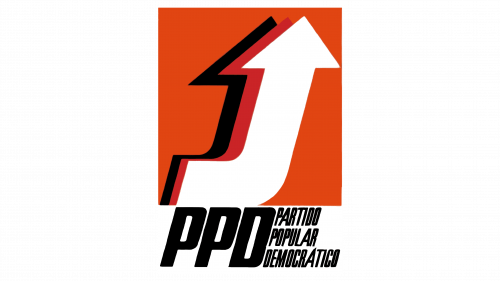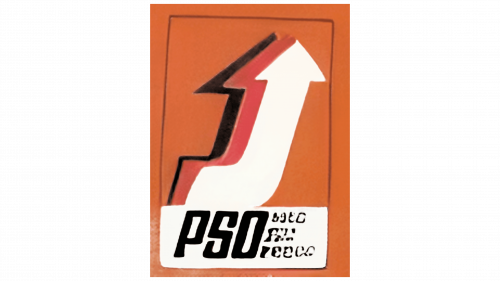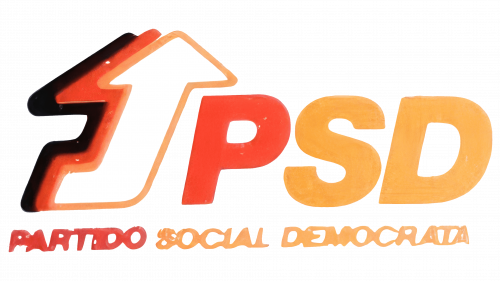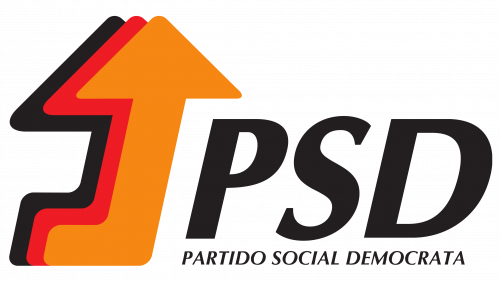 Partido Social Democrata Logo PNG
Partido Social Democrata Logo PNG
The logo of Partido Social Democrata demonstrates simplicity, accessibility, and concern for society and its unity. The party unites many supporters who advocate for the country’s development and integration into the European space.
Partido Social Democrata: Brand overview
The Social Democratic Party (Partido Social Democrata, or PSD) began its journey on May 6, 1974, shortly after the Carnation Revolution ended Portugal’s Estado Novo authoritarian regime. The founders, Francisco Sá Carneiro, Francisco Pinto Balsemão, and Joaquim Magalhães Mota, initially named it the Partido Popular Democrático (PPD), aiming to establish a centrist force committed to democratic reforms and social progress.
In 1975, the group participated in the first democratic elections for the Constituent Assembly, securing 26.4% of the vote, making it the second-largest party. This achievement solidified the new political organization on the country’s political stage.
In 1976, it took part in the first parliamentary elections of democratic Portugal, obtaining 24% of the votes and establishing its status as one of the leading political forces.
A significant milestone occurred in 1979 when the party leader, Sá Carneiro, became Prime Minister, heading the Democratic Alliance coalition. His tenure was tragically cut short in 1980 due to his death in a plane crash, a heavy blow to both the party and Portuguese politics.
Following Sá Carneiro’s death, Francisco Pinto Balsemão took over as party leader and Prime Minister, though his government was short-lived. By 1983, the organization had moved into opposition.
A new chapter began in 1985 with Aníbal Cavaco Silva’s election as party leader. Under his leadership, the group won the elections and governed from 1985 to 1995. This era saw significant economic reforms, including liberalization, privatization of state-owned enterprises, and preparing Portugal for EU membership, achieved in 1986.
From 1995 to 2002, it was in opposition, having lost power to the Socialist Party. However, in 2002, the party returned to power under José Manuel Barroso. His administration continued economic reforms and strengthened Portugal’s position within the EU. Barroso’s resignation in 2004 to become President of the European Commission underscored the success of Portuguese policy on the European stage.
After a brief leadership by Pedro Santana Lopes, the organization again found itself in opposition from 2005 to 2011, coinciding with the global financial crisis that severely impacted Portugal’s economy.
In 2011, Pedro Passos Coelho led the group back to power. His government faced severe economic challenges and implemented stringent austerity measures demanded by international creditors. These measures stabilized the economy but generated widespread public dissatisfaction.
Despite winning the 2015 elections, the organization could not form a government due to a coalition of leftist forces. This resulted in the unusual scenario of the party with the most votes being in opposition.
In 2018, Rui Rio was elected party leader, striving to renew its image and adapt its policies to contemporary challenges. However, the group again lost to the Socialists in the 2021 elections.
Meaning and History
What is Partido Social Democrata?
It is one of the main political parties in Portugal. It is a center-right party that supports a liberal economy, democratic principles, and Portugal’s integration into the European Union. The party actively participates in the country’s political life, nominating candidates for presidential and parliamentary elections. The party’s main goals include promoting economic development, improving social welfare, and strengthening national security. The party often significantly influences the formation of the government and the country’s management.
1974 – 1976
The party’s first emblem appeared after the Carnation Revolution when Portugal’s democratic movement began to gain momentum. The symbol resembles a poster or a traffic sign, emphasizing the party’s desire to lead, point the way to important values, and guide others.
On an orange background, three arrows—black, red, and white—are stacked on each other. The design demonstrates dynamism, symbolizing the unity of past, present, and future views.
The color shades highlight the dark totalitarian past under the Estado Novo regime, the struggle for a better future, and the new bright present. The unified shape of all figures speaks to the party’s consistency and stability.
At the bottom of the emblem are three capital letters PPD, underscoring the firmness of convictions. To the right is the full name – Partido Popular Democrático.
1976 – 1987
The emblem for the 1976 elections mirrors the previous design, but the name has been changed from Partido Popular Democrático to Partido Social Democrata. The arrows on the orange background indicate a turn towards democracy, an aspiration to stabilize the country’s situation and progress and improve citizens’ well-being.
1987 – 1997
The 1987 image looks lighter and freer. The symbol highlights the election victory and the attainment of 88 seats. The upper part of the emblem no longer has a restricting background. Three arrows freely indicate the direction of movement. The party can promote its ideas without hindrance and lead the country towards democracy.
Next to it, in orange, are the capital letters PSD. Their size signifies leadership and a large number of supporters. The full name is written at the bottom. Interestingly, Partido is in red, complementing the idea of importance, while Social Democrata is in orange.
1997 – 2011
The elections and change of party leadership led to an updated logo, reflecting a move towards compactness and clarity. It is as if the values and convictions of the Social Democrats crystallized during the development process. The badge features clear, upward-extended arrows. The massiveness of the symbols underscores the weight of democratic values in the country—the black letters of the abbreviation and the full name on the right echo the first arrow. The image appears complete and harmonious.
1999 – 2011
The new party emblem features a dynamic, upward-soaring arrow. The symbol reflects the movement’s development and rise, showing a desire to renew and reach new heights. The logo exudes confidence and strength. To the left of the arrow is the abbreviation of the party’s name. The bold black letters add stability and assurance to the emblem.
2011 – today
In 2011, the Partido Social Democrata (PSD) returned to the 1997 symbol with bolder letters for PSD. This change occurred in the context of the party’s election victory, where the Social Democrats secured many seats in parliament. Their victory enabled the implementation of a stabilization program aimed at pulling the country out of an economic crisis. The party’s logo was designed to reflect its mission and emphasize its readiness for leadership and transformation.
The 2011 logo of the Partido Social Democrata (PSD) features an arrow formed by two diagonal lines, one orange and the other red. The arrow points upward to the right, symbolizing forward movement and progress. To the right of the arrow is the party’s name, “Partido Social Democrata,” written in black font.
The arrow in the emblem symbolizes directed forward movement and progress, highlighting the party’s commitment to development and improving citizens’ living conditions. The orange and red colors represent the energy, passion, and determination the party puts into its work.
The emblem represents the party’s victory in the 2011 elections when the Social Democrats secured 108 seats, allowing them to implement a strict stabilization program to pull the country out of crisis. The logo’s symbolism reflects the party’s mission, demonstrating strength, confidence, and readiness for leadership.
The party’s name, “Partido Social Democrata,” is written in black, using a strict and clear sans-serif font. This font emphasizes the party’s seriousness and professionalism.
The logo’s arrow is orange and red, symbolizing energy and determination. The black font adds a touch of gravity and solidity.
2018 – today
In 2018, under the leadership of newly elected leader Rui Rio, the party underwent a significant rebranding. The new direction included a social focus and strict economic measures. The logo was designed to reflect these changes and showcase the party’s readiness for innovation and collaboration. The orange color chosen for the logo symbolizes a new phase of development and renewal, which was particularly important in the political context of that time.
The Partido Social Democrata (PSD) logo consists of large orange letters “PSD.” This simple yet bold symbol reflects the party’s determination and energy. Each letter is tilted forward, symbolizing movement and a drive for progress.
The logo reflects the liberalization of family and domestic values and the willingness to collaborate with opponents to reduce the power of oligarchs. It portrays the party as thriving and attractive, encouraging an increase in its followers.
The font of the emblem is large, bold, and italicized, emphasizing confidence and strength. The smooth and even lines of the letters give the logo a modern and professional appearance.
The emblem’s orange color symbolizes energy, optimism, and innovation. It attracts attention and evokes associations with warmth and positive change.










